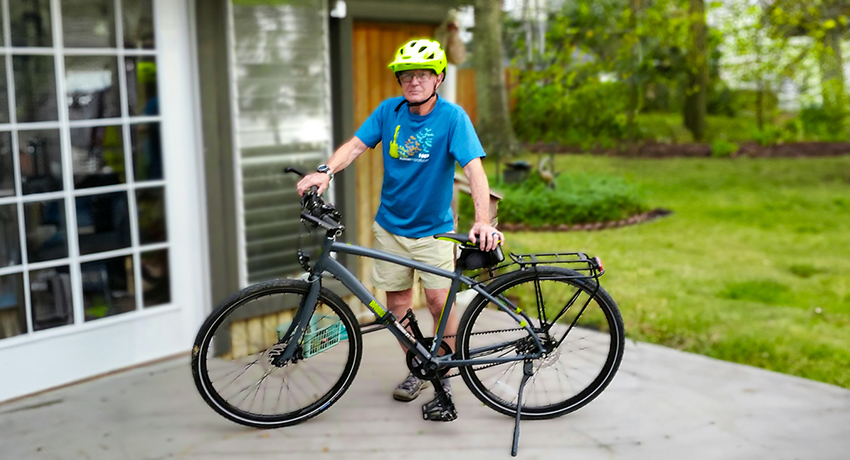Dedication and passion aptly describe Lee Norris, age 76, who has been running for 50 years. Finishing more than 50 marathons is certainly a huge life accomplishment, but Lee didn’t stop there. He took it to the next level by running ultramarathons, which are races longer than the typical 26.2-miler. While some were 40- or 50-mile races, Lee also has started 100 milers, and finished 15 of those.
“I did a quick calculation when I had my knees fixed, and I’ve put in about 60,000 miles on my knees,” Lee said. “I think I just wore the poor things out.”
Lee began to feel iliotibial (IT) band pain on the outside of his knee when running in summer 2021 that triggered his first knee-related doctor visit. X-rays revealed the medial meniscus on both knees was gone, creating bone-on-bone and a bowlegged frame. Lee said he didn’t remember being so bowlegged and clearly needed knee replacement surgery. Lee selected UT Physicians Orthopedics in Bellaire as his option for next steps.
Relying on expertise
A UT Physicians orthopedic surgeon examined Lee and discovered severe bilateral knee osteoarthritis, based on his genetics and extreme use of his knees. The team proposed two knee replacement surgeries to correct the bone-on-bone in both knees. Lee’s bowlegged frame was the physical evidence of the severity of his arthritis.
Double knee replacements are typically done as separate procedures, about three months apart. This reduces the risk of infection and the need for a blood transfusion.
It is also a little more difficult to rehab the knees following just one procedure. Knee replacement recovery can be intensive, so if a patient spends all their energy working on one side, it’s hard to then rehab the second knee sometimes in one sitting.
Repairing the knees
In October 2021, Lee got a full knee replacement of his right knee, replacing the femur, the tibia, his patella and adding the polyethylene in the middle. His case exhibited an above-average deformity of arthritis.
Four months after his right knee replacement, Lee went back in for the same procedure on his left knee.
Physical therapy contributed to Lee’s successful return to his previous athletic activities. After 12 weeks of therapy, they suggested another 8 weeks because he wasn’t quite there.
“By that time, I’d gotten full extension and flexion on the knees and asked about running,” Lee said. “They said, if it doesn’t hurt, do it. So that’s what I’ve been doing ever since.”
Happy results
Before his knee surgeries, Lee said he was so bowlegged that with every stride he took, the iliotibial band was scraping across the joint, getting inflamed, and causing pain.
“Once I got my new knees and everything was straight, that went away,” Lee said. “I also can stand and touch my ankles with my knees together at the same time, which I couldn’t do before. Fingers crossed; I’ve had no trouble with pain since then.”
Back to fitness
After a successful knee replacement recovery, Lee tries to run or bike every day, just to mix up the activity.
“It’s a good mix, because the running is more pounding, but the bike riding is more exhilarating, and you actually get your heart rate up higher,” Lee said. “Or at least I can – riding versus running!”
Running is relaxing and meditative for Lee. What he enjoys most about running is getting outside and being contemplative. It has always helped him relieve stress.
Lee’s next race adventure is the Ascension Seton Austin Half Marathon in February 2024. He set a personal record running the Austin Marathon in 1991 at 3 hours, 11 minutes – about half his current pace today.
“But hey, at least I’m out there,” Lee said with a grin.


